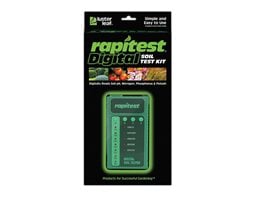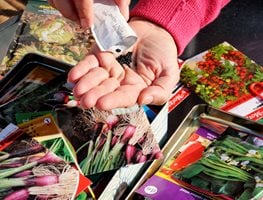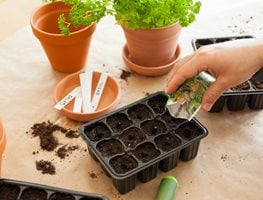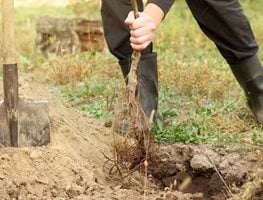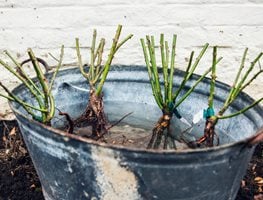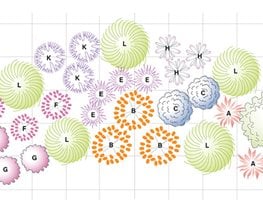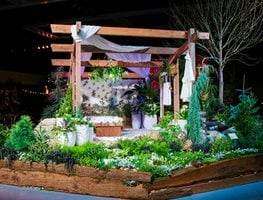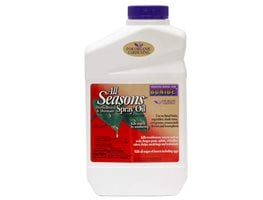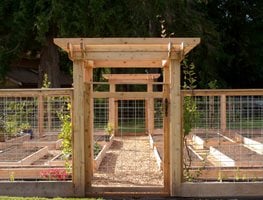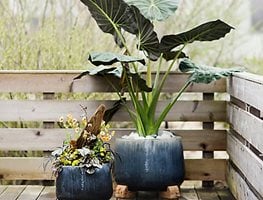10 Gardening Activities for January in the Pacific Northwest
Here are a few garden reminders, tips, inspiring ideas, and maintenance suggestions for your garden this month.
1. Test Your Soil
Even if you do an annual application of compost in late fall or early winter, it’s a good idea to test your soil to identify what nutrients are missing; then you can fertilize accordingly. You can test your soil yourself with a soil test kit or have your soil tested by a specialty lab such as International Ag Labs. Winter is a good time to test your soil so you have time to apply and work amendments into the soil before spring planting. Floret, a flower farm in the Pacific Northwest, has a great article that outlines their soil fertilization and testing techniques.
2. Inventory Your Garden Seeds
Inventory your seeds well before you’re ready to start planting to make sure you have viable seeds. Old or improperly stored seeds often have very low germination rates (below 50%). Look for the packaging date or year that’s typically printed on the seed pack, then compare how old your seeds are to this seed viability chart for edible crops as well as herbs and flowers. Generally, if your seeds are more than 3 years or 4 years old, it’s probably best to buy new seeds. It’s also possible to do a seed germination test (learn how in this article).
3. Start Seeds Indoors
January is the time to start getting your seed trays, growing lights, and other supplies ready. You can start sowing early crops indoors. Early crops include plants like beets, broccoli, cabbage, celery, kale, leeks, lettuce, and mustard. Then in early February, you can likely start sowing summer crops such as eggplant, peppers, and tomatoes. Look up your average last frost date and use this seed sowing calculator to find the correct time to sow seeds in your area.
4. Plant Bare-Root Fruit Trees
It’s important to plant bare-root trees before they break dormancy. Planting in later winter helps as there’s often additional moisture from consistent rain. Order bare-root trees from online retailers such as Stark Bro's or look for trees at your local garden center. To learn more about planting bare-root fruit trees, read this article or watch this how-to video.
5. Plant Bare-Root Roses
Start planting bare-root roses in late January when many garden centers begin stocking them and continue planting through March. You can also order bare-root roses from online retailers such as David Austin or Regan Nursery. David Austin also has a great video and article on how to properly plant bare-root roses.
Don't miss what to do in the garden each month, make sure you're getting our weekly newsletter.
6. Pre-Plan Your Garden Beds
You can design a custom garden bed or purchase a pre-planned garden that many retailers such as Prairie Nursery offer. The pre-planned gardens come with a complete set of plants for spaces of various sizes. If you’re going the do-it-yourself design approach, consider using a design app such as Home Outside or iScape. A pen and paper will work great, too! Whatever design method you choose, January is a good time to remove grass for new garden beds and to prepare space with irrigation, lighting, edging, stepping-stones, and more.
7. Pick a Flower Show to Attend
One of the largest and best flower shows in the country is the Northwest Flower & Garden Show held each year in Seattle. January is a great time to start planning trips to shows like this as well as others such as Floratopia in Portland.
8. Spray Fruit Trees
Winter application of horticultural and dormant spray oil can help prevent a number of pest and disease issues in your backyard orchard. The spray can help prevent things like scale insects, blister mites, mealy bugs, and more. Spraying in winter when other beneficial insects are not around is important so you don’t damage their populations. Watch this video from Garden Answer to learn more about spraying your fruit trees during dormancy and how it’s done.
9. Build a Raised-Bed Garden
Raised beds are one of the best ways to grow your own food because you can control the quality of the soil in each bed. This control will ensure that each bed has the proper nutrients, drainage, and water for your favorite crops. When planning your raised beds, it’s a good idea to think ahead for deer or other garden intruders. Check out this deer-proof backyard kitchen garden created by gardener and author Karen Chapman. If you’re looking for smaller raised beds, look to retailers such as Gardener’s Supply Company that sell a wide range of styles from metal to plastic, to wood. Building raised beds now will get you ready for spring when you can sow or transplant your edible crops.
10. Update Your Containers, Structures & Garden Ornament Collection
During the winter months containers, structures, and other garden ornaments really stand out in the landscape. Spend some time looking at your garden from indoors or take a stroll through it (be sure to bundle up!). Look for garden elements that need an update or areas of the garden that you feel need to be celebrated. Entryways, garden benches, dining areas, the start of a path—these are examples of spots or elements that benefit from the addition of beautiful container arrangements or arbors. If you have garden beds with dense plantings, consider adding a trellis or piece of garden art to add architectural interest. To find new containers or other garden structures, try Terrain, Gardener’s Supply, or Wayfair for things like Campania Fountains.
If you enjoyed this information, sign up for our weekly newsletter. Each week, you'll get Garden Design's best delivered right to your inbox including design tips, plant picks, great gardens, outdoor living products, and events to enjoy — along with monthly gardening checklists just for your area.
Do you know someone who would enjoy this Pacific Northwest Region gardening information? Why not share it with them?
When you purchase products through links on our site, we may receive an affiliate commission. Thank you for your support.
